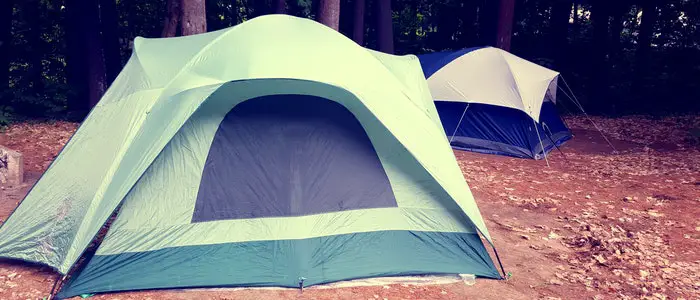So you or somebody you know may be going into the great outdoors soon and you want to know what the best shelter to carry with you is. The answer to that is, “well it depends”. You will want a shelter that is suited to your needs and can do whatever it is you want to be done.

When you are like my buddies and I that hike often you become finely tuned to the challenges posed by the great outdoors. You want to be as self-sufficient as possible and be prepared for anything that comes your way. A shelter should be able to store easily, be lightweight, durable and quick to setup or takedown.
Throughout my experience these are the things you need to consider about shelter choices to conquer the wild and overcome any scenario thrown at you.
1. Keeping the Weight Light
One of the main concerns you will have when going on a trip into nature is the amount of weight you are carrying. You want to carry the lightest load possible because according to J. Knapick et al. every kilogram added to your feet increases energy expenditure by 7% to 10%. This is not just some quote from some journal but something you will actually feel when you get out there.
Therefore there is a tradeoff between whether or not you intend to travel often and fast or you intend to camp. So if you are looking for a lightweight solution to help you move about more quickly than you can look to Tarps as a solution.
A tarp is essentially a waterproof canvas. You can either have it held up with a pole or stretched above your quarters with rope. They are lightweight by comparison to other alternatives, durable and are versatile in use. It is one of my personal favorites that you should also try.
2. Ease to setup
The ease by which you are able to set up your shelter will be another major factor in picking out the best shelter for your bug out bag. If you are also going to be travelling a lot you may want to have a shelter where you can pack up and go immediately.
If you prefer higher stakes survival outings in the wild then you need to move often and quickly. Therefore spending hours on packing or unpacking can mean more than just a hassle but a very unpleasant experience.
A tarp is a great buy if you want ease of assembly. However you can purchase Tents that are designed with ease of assembly in mind.
3. Comfort in the wilderness
How comfortable do you want to be?
That depends on whether or not you’re a survivalist junkie, going for a trek or are trying to enjoy nature. If you want to be an ardent survivalist then comfort doesn’t really matter, so you can get a tarp, mat and a sleeping bag. However everybody else will want a little bit more.
If you’re going for a day out or a trek in the wilderness then a hammock alone may be all you need. Especially if you are somewhere that is wet and moist a hammock can really come in useful. All you would need are two trees and you could string up a hammock easily to have yourself your own bed safely of the ground.
However if you are somewhere without any trees or are staying out for long then you want to use a Tent. Even a simple tent with a zip up enclosure is comfortable for a nature outing. Particularly good are tents with an enclosed base to keep you off the ground and safe from anything crawling around such as venomous snakes as well as other animals.
4. Durability of your bug out shelter
If you intend to bug out you want a system that will stand the test of time. Durability of a shelter is the next major concern when thinking about the best bug out bag shelter to carry around.
Why is durability important? (Besides money)
Well the answer is this. You want your shelter to be able to reliably last you through your trip.
Especially if you are in an area where they may be dangerous creatures and you intend on carrying a tent. Trust me, having a large spider or a venomous snake crawling into your tent while you sleep.
Also if the weather conditions are variable and you get rain, snow, or heavy winds you will need your tent or tarp to be able to stand up to the environmental extremes with some success.
In terms of tarps there are some great Russian variety tarps that you can try which happen to be really strong. I used one of these on my last outings and I enjoyed how it really stood up over several years through windy outings and even storms.
When it comes to tent get a type that is made of strong materials such as canvass. Also th attachment points from the material to the support should be wide and well stitched so as not o have easy tear points.
5. Cost of your Bug out shelter
This tip was saved for last because going cheap doesn’t always do the trick. Tents can range anywhere from between $30 and $230, even so a high priced tent may be more than what you need.
A tent is the best bug out sleep system you can find. Some overpriced ones may have a little too much additional features that are useless for an individual hiker. If you have bugging out on mind then the best range to aim for is somewhere in the upper middle price range between $140 and $199.
When looking for hammocks and tarps they are within a fairly standard mean of $130 and $35 respectively. You can be sure to get quality materials either way. Any additional feature you want to pay for is up to you.
Final Thoughts
The experience of bugging out is a great one at that. Whether you’re a hardcore survivalist, like to trek or are enjoying nature there is something special about the experience.
Anyone who intends to go out bugging needs to be clear about what it is they want and be very honest. There are real dangers that can impact on the experience and make it unpleasant. In all you need the lightest weight, most durable, easy to setup and comfortable shelter possible.
The above tips will be more than helpful in achieving those goals. So go and bug out with confidence.

